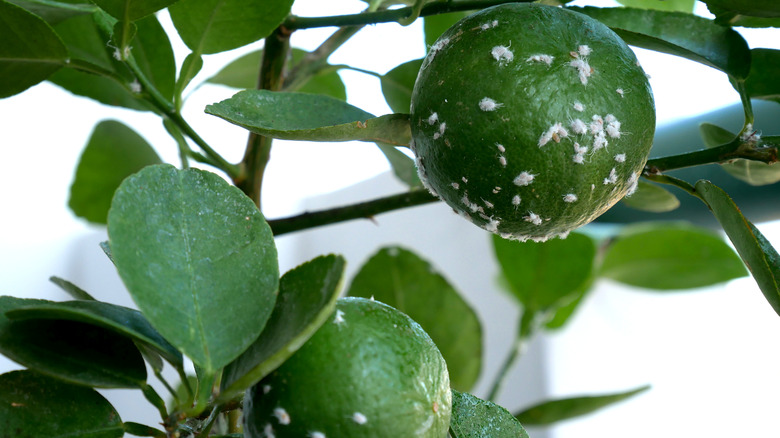TikToker Shares Unique Method For Getting Rid Of Mealy Bugs
Mealybugs have a knack for targeting certain plants in our beloved gardens. Succulents, ornamental plants, citrus trees, and even some houseplants are particularly susceptible to an infestation. You'll find these soft-bodied common houseplant pests cozying up in plant crevices and folds. They typically infest the leaves, stems, and sometimes even the fruits of plants, feeding on the precious sap, and causing wilting, yellowing, and stunted growth. What's worse is that the so-called honeydew mealybugs excrete after feeding attracts black soot mold which then weakens plants by blocking sunlight. Not to mention, the waxy, hairy cotton-like appearance of mealybugs is far from aesthetically pleasing — if you want to get rid of mealybugs for good, TikTok creator @tannertheplanter suggests using Castile soap and water.
This natural, eco-friendly solution is safe and gentle on plants, but how effective is it in killing mealybugs? Castile soap is a common ingredient in homemade pesticides, cleaners, soaps, and more. It is derived from plant-based oils like olive or coconut oil, which means it's all-natural and biodegradable. When mixed with water, it creates a soapy solution that disrupts the waxy protective coating of soft-bodied pests, making them vulnerable. It's like mealybug kryptonite.
How to make your own Castile soap and water solution
Assemble your mealybug-infested plants on a workbench or table first. Ensure the pots are covered securely in plastic. If you are repotting, just uproot the plant so you needn't worry about getting the soil and pot wet during submerging. Next, hose each plant down, focusing on heavily infested sections, such as the undersides of leaves, stems, and crevices. While hosing, gently rub the affected areas to get rid of more mealybugs and other pests. Next, fill a large plastic container with clean water and mix in some pure, unscented Castile soap.
Submerge each plant in the solution for a few minutes, then rinse or hose it down thoroughly. Replace the treated plant on the workbench or table and let it drain to get rid of excess water. Make sure you do this in the morning as exposure to the afternoon sun may stress the plants. Depending on the level of infestation, you may need to do this once a week. This solution can also help get rid of other plant pests like aphids and spider mites.
